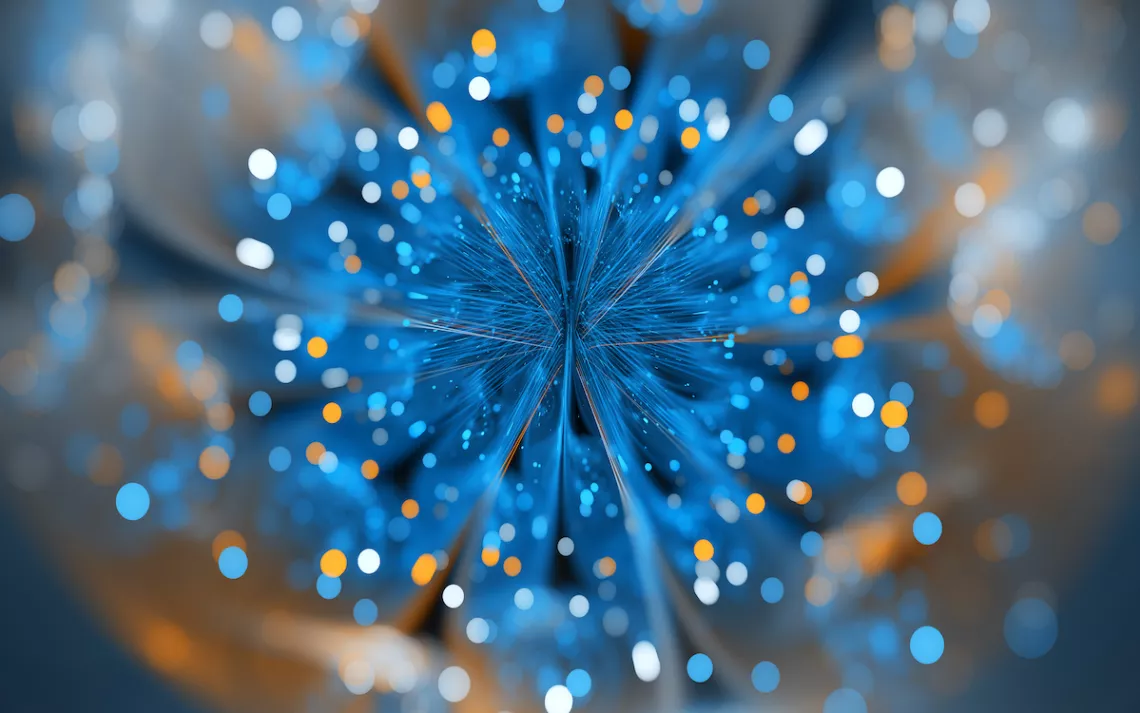Ready to Chill Out? Look No Further Than Nature’s Fractals.
Studies suggest that as we turn our backs on shapes in nature, we’re losing our sense of place and home

Photo by iStock/Ideas_Studio
“Look deep into nature, and then you will understand everything.”
These intriguing words from one of the great scientific minds of the 20th century, Albert Einstein, could not be more profound for our contemporary age. Technology and mass industrialization increasingly connect us through screens and separate us from the natural world. Data continues to show that living a mediated life—through social media and other platforms—is having a dramatic impact on mental health, leading to stress and depression.
Worldwide, stress is responsible for nearly 5 million deaths annually (120,000 in the United States) and is linked to the six leading causes of death in this country—heart disease, cancer, cirrhosis of the liver, lung ailments, accidents, and suicide. Research indicates that excessive social media use can impact users through the mind-gut connection, with anxiety triggering nausea, headaches, tension, and sleep disruption and loss.
What we need more of now, according to Dr. Richard Taylor, are fractals.
Taylor is a physicist at the University of Oregon who also holds a degree in art theory from the University of South Wales and is trained as a painter at the Manchester School of Art. He and other researchers are pioneers of a field of study into how our relationship to geometric shapes in nature—fractals—bring calm and a sense of belonging. His research also considers how the more we get separated from fractals in nature because of technology, the bigger impact it may have on human psychology.
A fractal, technically put, is a nonregular geometric shape that has the same degree of nonregularity on all scales. Taylor puts it more elegantly. “Think of a tree,” he says. “You see a certain pattern formed by big branches, and when you zoom in a little closer, you see smaller branches forming the same pattern, and so on. Think of clouds, or rivers, or coastlines. It’s a pattern that repeats itself through different size scales. It’s the basic building block of natural scenery.”
The impact of the fractals of nature on humans is subtle, Taylor says, and can be better understood when considering their impact on early evolution. “It all has to do with survival. Imagine a thick curtain of trees in the forest where you’re living. What you need to see is that tiger lurking in the trees, so when your eyes scan the scene, what they want to see is the curtain of the forest, which means that the tiger—which disrupts the fractal pattern your eyes seek—will be spotted quickly.”
Before the Industrial Revolution, life in the United States and Europe was more agrarian, with most of the population living and working in the countryside. But with the migration of people from the countryside into the cities and away from the natural world, we have become less exposed to nature, and as such, to its inherent shapes. We’ve put humans into a modern urban environment devoid of nature’s fractals, Taylor says, where the visual system can no longer find what it has evolved to need. “Look at today’s modern cities, with sets of boxlike buildings along a road, then look at Rome,” Taylor says. “Go to the center of the city, where streets are laden with beautiful samples of older architecture, and you’ll see how things have changed. We’ve turned our backs on nature.”
Enthralled by the paintings of Jackson Pollock, Taylor and two colleagues published a study in Nature in 1999 showing how Jackson Pollock’s paintings were fractals, describing the artist’s drip paintings as “reflecting the fingerprint of nature.”
In 2006, Taylor participated in a NASA study that examined ways to maintain low stress levels in astronauts on long missions. Taylor’s research showed how little time fractals take to trigger a reaction and how the fractal presentation did not need to be a dominant viewpoint but could be incorporated into a background environment. In his report, Taylor also expressed the belief that fractals might prove particularly useful in environments such as hospitals, or in other situations where humans were deprived of nature.
In 2019, Taylor joined with designers Anastasia and Martin Lesjack to create flooring with incorporated fractals for use in stressful venues like airports and hospitals. They won an Innovation Award at NeoCon (the world’s top commercial interior design event) and went on to develop other flooring products for office buildings.
Today, Taylor is studying what he labels “atmospheric fractals,” such as tree branches swaying in the wind, or flickering flames, or clouds moving across the sky. His group is also looking at fractal sounds created by wind or a river.
“The aim is that if we immerse people in this atmosphere of multisensory fractals, stimulating each of the senses will provide an emergent effect that is more powerful than the individual ones experienced in isolation,” he says.
Might this also provide a critically needed impetus for a better appreciation of nature, strengthening the drive to preserve the natural world?
Dr. Margaret Sereno, a psychologist who has been working with Taylor, says, “I think it can only increase the strength of our ties to the natural environment. Seeing these images, and knowing the positive impact on our health—both physical and mental—will not only drive us to preserve natural places and work to bring nature more into the world’s cities, it will bring home to us the vital importance of preserving the world’s natural spaces.”
 The Magazine of The Sierra Club
The Magazine of The Sierra Club



